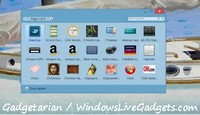How to create a disk image or clone your system disk, to move to a new drive
Here is a quick guide on how you can replace safely your system hard disk, i.e. the disk where Windows is installed, moving everything into a new, larger, disk, in order to avoid re-installing Windows and your programs. You cannot have the same results by just copying and pasting the contents of the old disk to the newer one, as you do usually with files and folders when you work on your PC. You need to make a “clone” or “image” of your old disk.
This clone or image can be created by Windows, however, for the moment it is safer to use a freeware like EasyUs ToDo Backup, DriveImage XML or Macrium Reflect Free. I find Macrium Reflect easier to use.
Native Windows imaging does not seem to be reliable enough yet, therefore I make an image with it, just in case, but I always make another one with Macrium. You must place the image of your old disk temporarily to another disk, internal or external. Therefore, at least 3 disks are involved: your old one, a temporary holder of the image of your old disk, and the new disk that will receive the image.
Follow these steps to create a disk image (clone your disk) using Windows native cloning abilities. 1: Go to the Control Panel of Windows, then to Backup and Restore, if you are on Win7, or to Windows 7 File Recovery, if you are on Windows 10. Click the option at the left column, Create a System Repair disc. This disk will let you boot your PC to copy the image of the old disk to your new disk. After you create the System Repair disk, click the option, again at the left column, Create a System Image. \\ 2: Shut Down your PC and replace your old disk with the new one. The new disk should be of equal or larger size. \\ 3: Boot your PC using the System Repair disc you created on the first step. \\ 4: In the Advanced Restore options select the drive you want to copy the image of your old drive to. You must select only one drive (if you have a second drive installed on your PC, unselect it). \\ 5: After Windows Repair Disc finishes copying the image, start Windows and go to Disk Management. Extend the partition of your new drive to use all the space provided by your new disk. (Windows initially creates a partition that is identical with the size of your old disk). Go to Disk Management, right click on the System Partition (usually C) and select the Expand option. That’s all!
